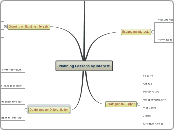MAT.126
2.5-2.6
2.6 Related Rates
Use related rates to solve real-life problems
Guidelines
Identify all given quantities and quantities to be determined. Make a sketch and label the quantities.Write an equation involving the variables whose rates of change either are given or are to be determined.Using the Chain Rule, implicitly differentiate both sides of the equation with respect to time t.After completing Step 3, substitute into the resulting equation all known values for the variables and their rates of change. Then solve for the required rate of change.Find a related rate
Differentiate implicitly wrt t
Use known equations
2.5 Implicit Differentiation
Use implicit differentiation to find the derivative of a function
Differentiate both sides of the equation with respect to x.Collect all terms involving dy/dx on the left side of the equation and move all other terms to the right side of the equation.Factor dy/dx out of the left side of the equation.Solve for dy/dx.Tangent Line to an Implicit Graph
Higher-Order Implicit Derivatives
Explicit Domains for Implicit Functions
Slope of an Implicit Graph
Graphing Implicit Relations
Process
Chain Rule
To differentiate an implicitly defined function one must use the chain rule on all terms involving y.
d dy
---[ f(y) ] = f'(y) ----
dx dx
Distinguish between functions written in implicit form and explicit form
Explicit: y = f(x)
Implicit: y and f(x) are mixed together









